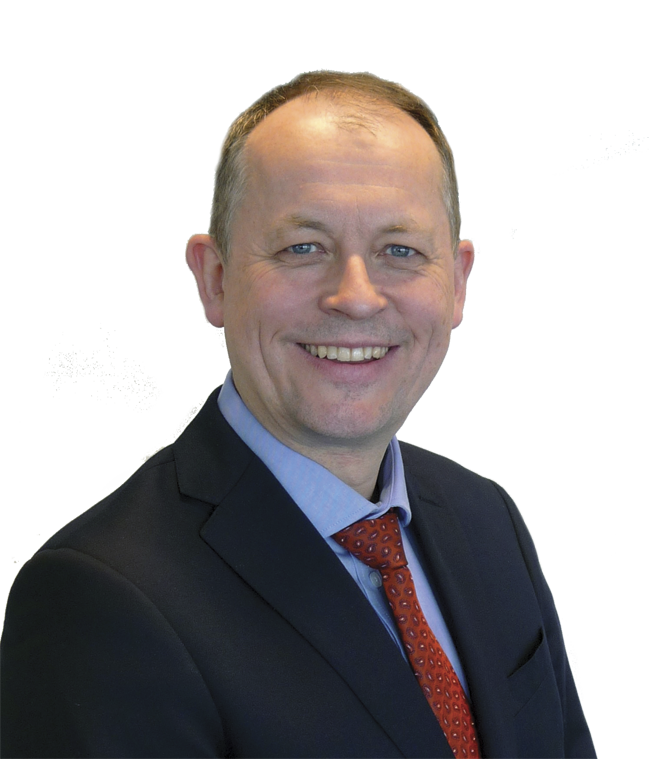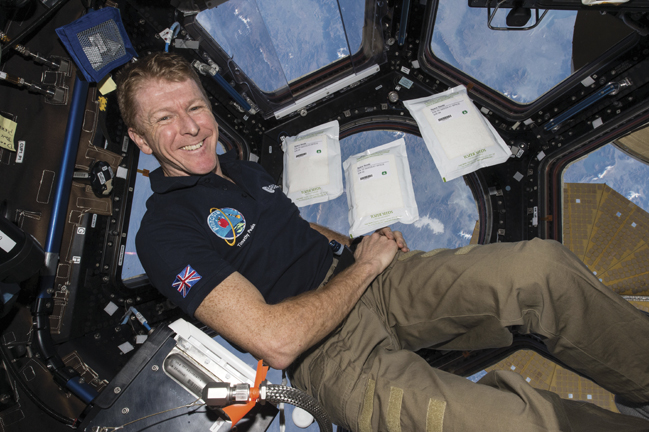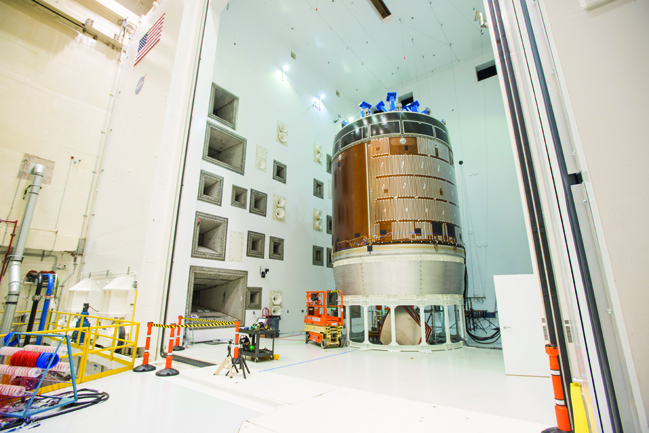
David Parker
Director of human spaceflight and robotic exploration, ESA
Education
1984 BSc Hons in aeronautics and astronautics
at Southampton University
1989 PhD in wind tunnel magnetic suspension technology at Southampton University
Career
1990 Joined British Aerospace Space Systems as a guidance, navigation and control engineer
1991 Promoted to head of liquid propulsion systems
1995 Appointed head of guidance navigation and control department at Matra Marconi Space, Bristol
1997 Selected for a two-year secondment as assistant director at the British National Space Centre, London
2002 Key account manager for space science, EADS Astrium
2004 Director of space science and exploration at the UK Space Agency
2012 Appointed chief executive of UK Space Agency
2016 Appointed director of human spaceflight and robotic exploration at ESA
When David Parker joined ESA in April, he did so at an exciting time for European, and particularly UK, space operations. The former head of the UK Space Agency moved to its European counterpart to become director of human spaceflight and robotic exploration, a role that means he is heavily involved in Tim Peake’s ISS mission, as well as programmes such as ExoMars.
Speaking recently with Parker, The Engineer asked about the progress of Major Peake, the various ESA astronaut missions in the pipeline, and how the future of manned spaceflight is shaping up.
“He’s got less than a month now to go,” Parker said about Peake in May. “He’s still extremely busy with the science programme, and I was just talking to him about some of the experiments he’s been involved with: the life-science ones, and the air-breathing experiments to do with the effects of the space environment on the lungs of the astronauts, which is all really interesting stuff.”

With Peake due to return to Earth on a Russian Soyuz craft in mid-June, Parker has one eye on ESA’s upcoming missions to the ISS. French astronaut Thomas Pesquet is due to begin his six-month mission aboard the station later this year, and Paolo Nespoli is scheduled to return to the ISS in May 2017, a month after the Italian celebrates his 60th birthday.
“For Thomas Pesquet’s mission, the very detailed planning is now underway, with launch somewhere around the beginning of November,” said Parker. “He’s the last of that group of astronauts that were selected in 2009 to get his first mission, so he’s very much looking forward to that.
“Paulo Nespoli will be returning to the station. He’s one of the more senior astronauts, so it’s going to be interesting, the science around how he performs and how he reacts to the space environment again, having done missions before.”
Just days before we spoke to Parker, it was announced that 40-year-old German Alexander Gerst will become only the second ESA astronaut to command the ISS. Having first spent time on the station two years ago, Gerst will return in 2018 for another six-month tour.
“It’s early days of planning for Alex’s mission, but he was presenting his first mission to us at the programme board last week, and he’s still massively enthusiastic. I remember he was out supporting the families in Baikonur for Tim’s launch, and I was having a drink with him, and I think he would have pushed [Peake] out of the way to get back on board the rocket.”

Those sentiments were echoed recently by Helen Sharman, Britain’s first astronaut. Speaking on the 25th anniversary of her mission to Mir, Sharman said she had yet to meet an astronaut that wouldn’t return to space, and she was no exception. She also warned that Peake could be the last UK astronaut for the foreseeable future unless more funding was forthcoming.
Later this year Parker and his ESA colleagues will be making the case for Europe to continue its involvement with the ISS until 2024. If agreement can be reached to join the other partners in the station’s operation, that would translate roughly to one ESA astronaut mission to the ISS each year.
“The opportunities are there for future missions for this group of astronauts,” said Parker. “We probably wouldn’t start a new selection, but that’s not definite. It would be more about taking the maximum experience out of the astronaut group that we have now, who have all proved to be excellent.”
If the ESA member states can agree a funding package, that could open the door for Tim Peake to return to the ISS at some point. Failing that, UK space activity in the near future may be restricted to manufacturing, something the country has traditionally excelled in. ESA is a key partner with NASA in the Orion programme, supplying the service module that will provide propulsion and life support for the US-built crew module, as humanity once again looks to explore deep space. Manufacturing so far has been based on the continent, but future iterations of the service module could see the UK play a role in the supply chain.
“There will be some need for further development of the service module, so the possibilities are there,” Parker explained. “Alongside that, we want to participate in other elements of the future exploration programme. The thing we’re talking to member states about is the Deep Space Habitat.”
This is a concept proposed by NASA to house astronauts beyond low-Earth orbit for periods up to 500 days. With the ISS approaching the end of its service, and nations unable to commit to lunar or Martian landings yet, the Deep Space Habitat would act as something of a testing ground for more ambitious missions of the future.
“Think of a mini space station, but with an electric propulsion system that would go towards the Moon, either into a lunar orbit or a Lagrangian point – one of the balance points between the Earth and Moon’s gravity – where you could have a stable place and basically operate there for weeks and eventually months, learning how to operate far more independently from planet Earth, so a thousand times further away than the space station is.”
“We’d use the Orion vehicle to take the astronauts there. You’d assemble a habitation module and a propulsion module in Earth orbit, then start to fly out on voyages of exploration into deep space for the first time. The Apollo missions only went to the Moon for a few days at a time. This would be weeks or months in deep space.”
For these lengths of time and at that distance, the environment becomes more hostile, and life-support infrastructure becomes complicated. Radiation shielding, in particular, is a major concern. The Deep Space Habitat would be operating beyond the magnetic field protection of the Van Allen belts, and astronauts would therefore potentially be exposed to lethal doses of radiation if not properly equipped.
Studies for the Deep Space Habitat are still in the early stages and ESA is waiting to see how NASA intends to proceed. It’s being led by the US agency, with European participation dependent on a number of factors, not least if NASA decides to actually ‘green light’ the programme. If it does go ahead, ESA’s contribution to the project could include both technology and personnel.
“That would be our aspiration,” Parker said. “The idea is we make contributions to the Deep Space Habitat as part of offsetting our responsibilities on the space station programme, and then perhaps providing service modules…that would essentially entitle the possibility of European astronauts to be on board. All of that is subject to negotiation, none of it has been agreed, but it’s clearly the aspiration to not just be building things, but also to have European astronauts setting out on voyages into deep space.”
So, dependent on the funding, the future for European astronauts looks bright. Perhaps one day Tim Peake might be the first UK astronaut to venture into deep space. Probably best to let him get reacquainted with gravity before anyone from ESA suggests it though.
CareerCV




Glasgow trial explores AR cues for autonomous road safety
They've ploughed into a few vulnerable road users in the past. Making that less likely will make it spectacularly easy to stop the traffic for...